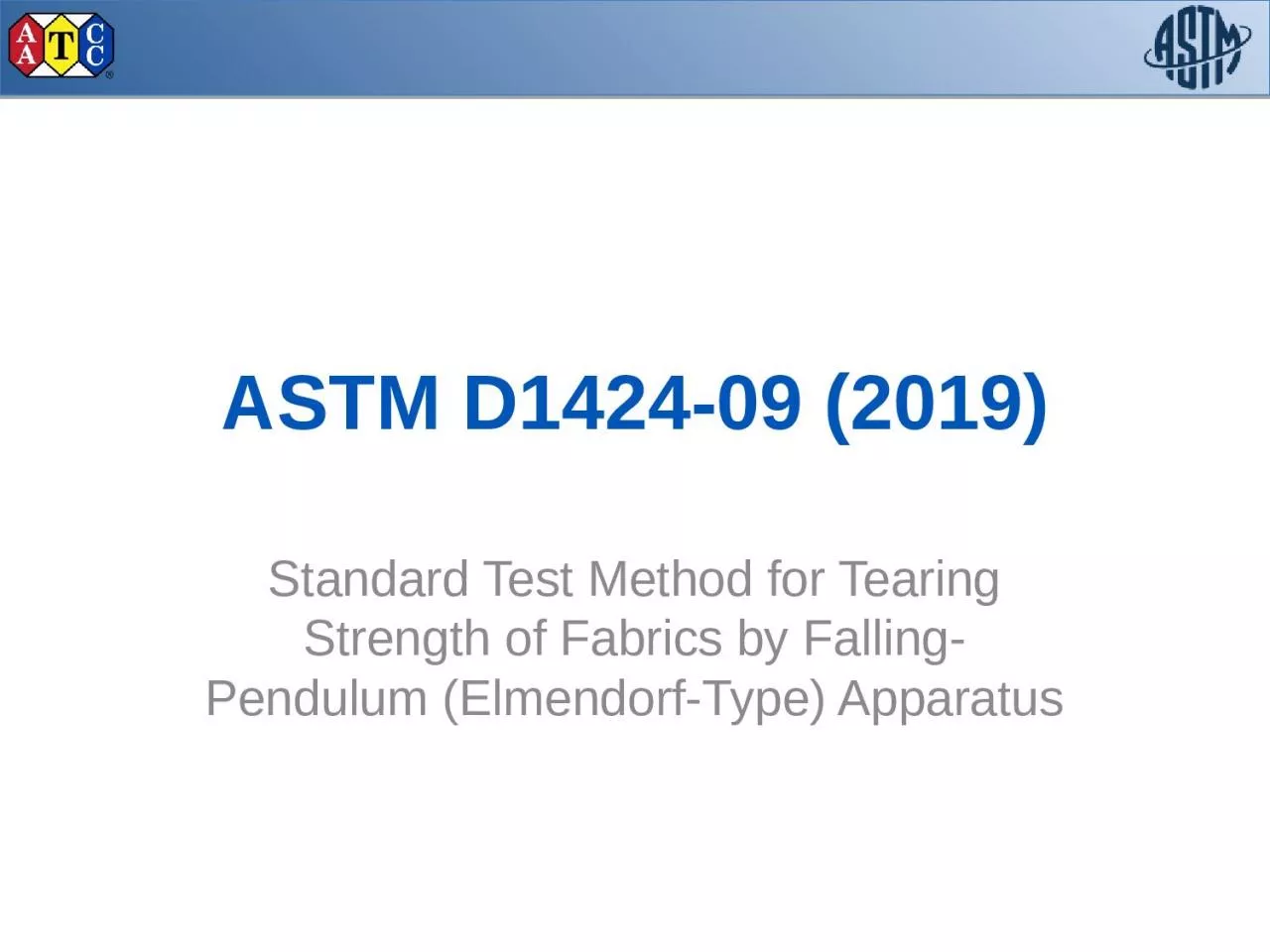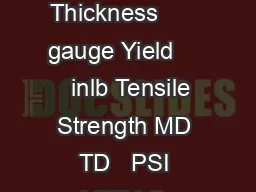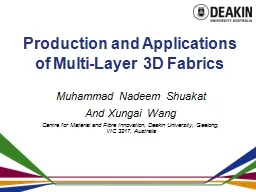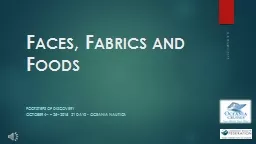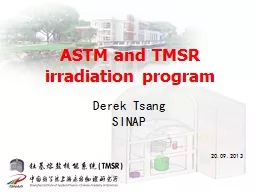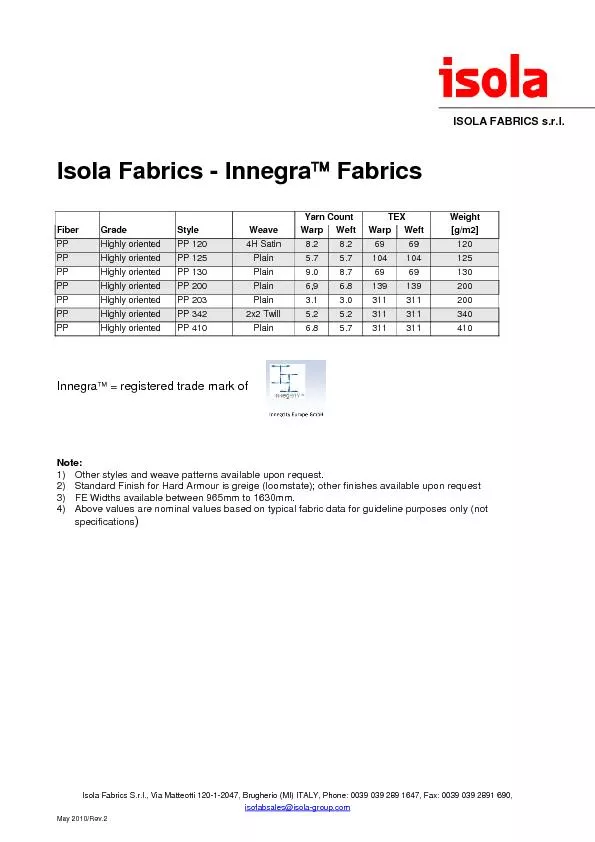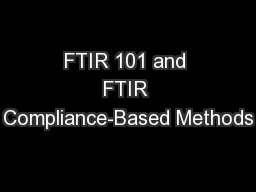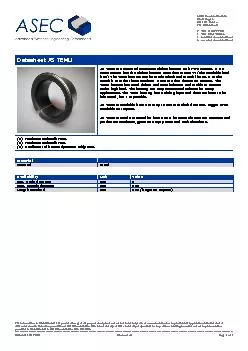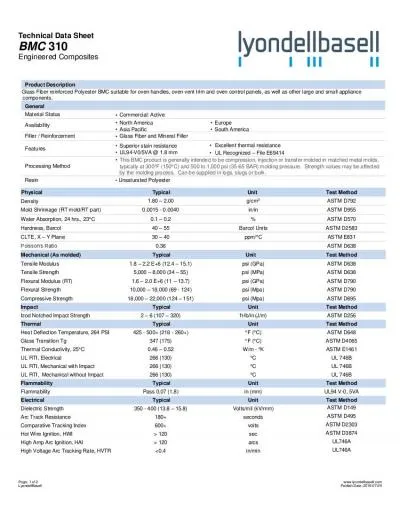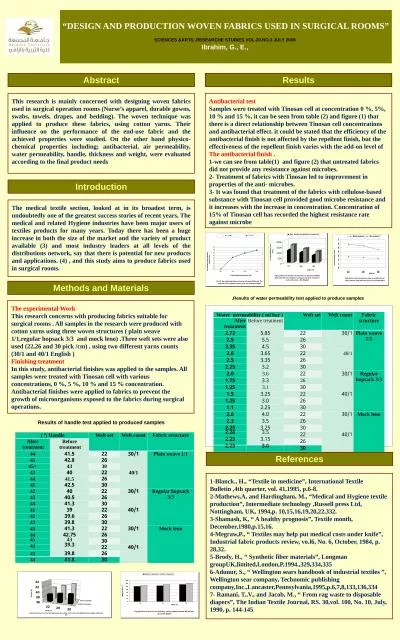PPT-ASTM D1424-09 (2019) Standard Test Method for Tearing Strength of Fabrics by Falling-Pendulum
Author : delcy | Published Date : 2023-11-21
ASTM D226113 2017 Standard Test Method for Tearing Strength of Fabrics by the Tongue Single Rip Procedure ConstantRateofExtension Tensile Testing Machine Tearing
Presentation Embed Code
Download Presentation
Download Presentation The PPT/PDF document "ASTM D1424-09 (2019) Standard Test Metho..." is the property of its rightful owner. Permission is granted to download and print the materials on this website for personal, non-commercial use only, and to display it on your personal computer provided you do not modify the materials and that you retain all copyright notices contained in the materials. By downloading content from our website, you accept the terms of this agreement.
ASTM D1424-09 (2019) Standard Test Method for Tearing Strength of Fabrics by Falling-Pendulum: Transcript
Download Rules Of Document
"ASTM D1424-09 (2019) Standard Test Method for Tearing Strength of Fabrics by Falling-Pendulum"The content belongs to its owner. You may download and print it for personal use, without modification, and keep all copyright notices. By downloading, you agree to these terms.
Related Documents

